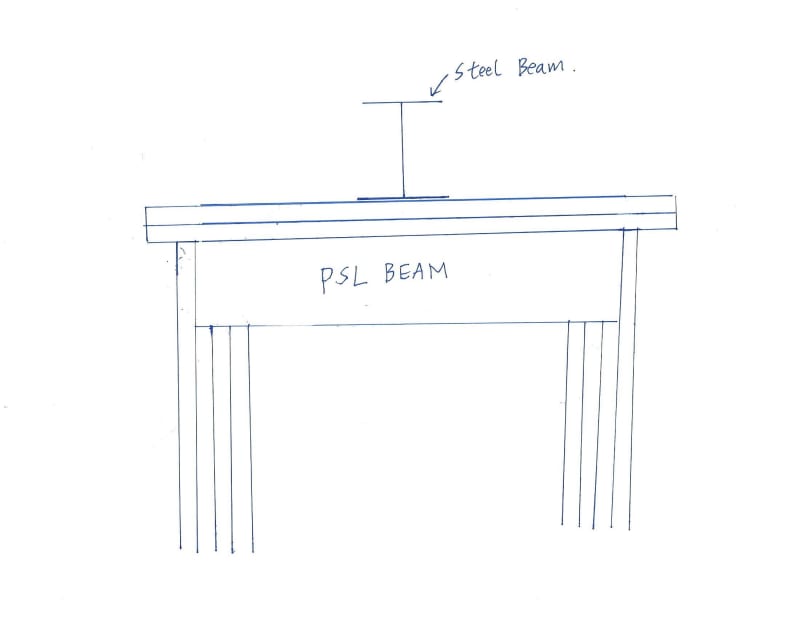AlexWong122
Structural
Did any one encounter the situation where there is a steel beam on top of header like the sketch below? The reaction force on the steel beam end is around 20 kips so the bearing is not a problem. This steel beam is located on main floor and uplifting is not an issue. The span is 16 ft and the factored moment is 100 kip-ft, which is too large for any PSL beam. I am using W 10 x 45 steel beam (due to the floor height and being conservative). The other end of the steel beam is properly restraint to a PSL post. This beam will have solid blocking @ 7' O.C. with joists that runs parallel to it.
By visiting the different sites I have seen some engineer just put the steel beam on top of the top plate without any connection. But is it necessary to restraint the steel beam from moving laterally or axially in case of earthquake event? What is common practice for this type of joint?
Similarly I have also seen steel beam rest on stud wall with a few studs underneath the beam. No bolting or any connection between the steel beam and the top plate.
I am still trying to figure out all the industrial standard for wood frame construction so hopefully it is not a stupid question.

By visiting the different sites I have seen some engineer just put the steel beam on top of the top plate without any connection. But is it necessary to restraint the steel beam from moving laterally or axially in case of earthquake event? What is common practice for this type of joint?
Similarly I have also seen steel beam rest on stud wall with a few studs underneath the beam. No bolting or any connection between the steel beam and the top plate.
I am still trying to figure out all the industrial standard for wood frame construction so hopefully it is not a stupid question.

